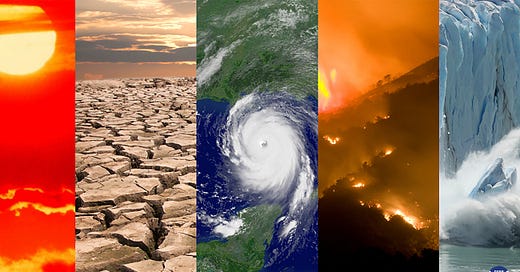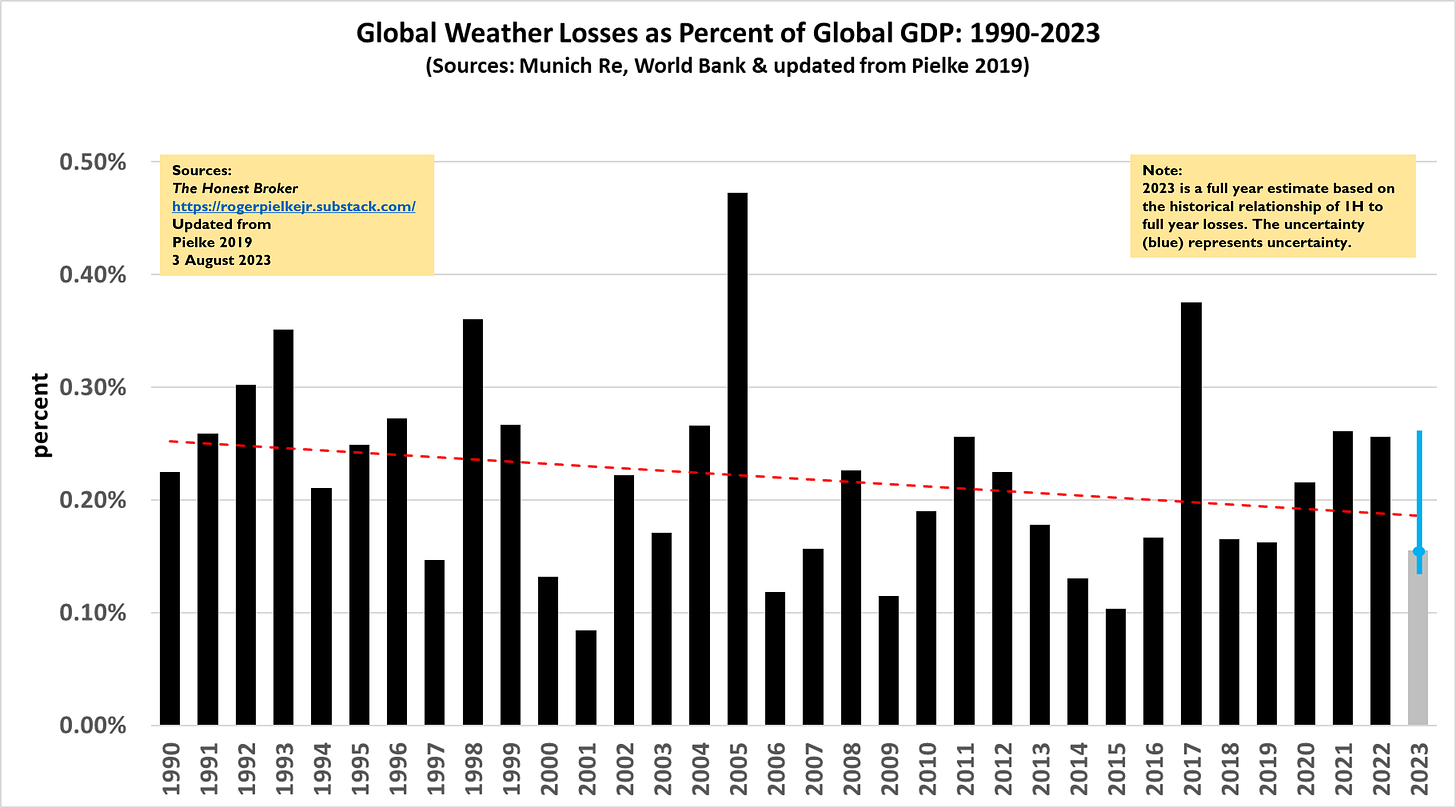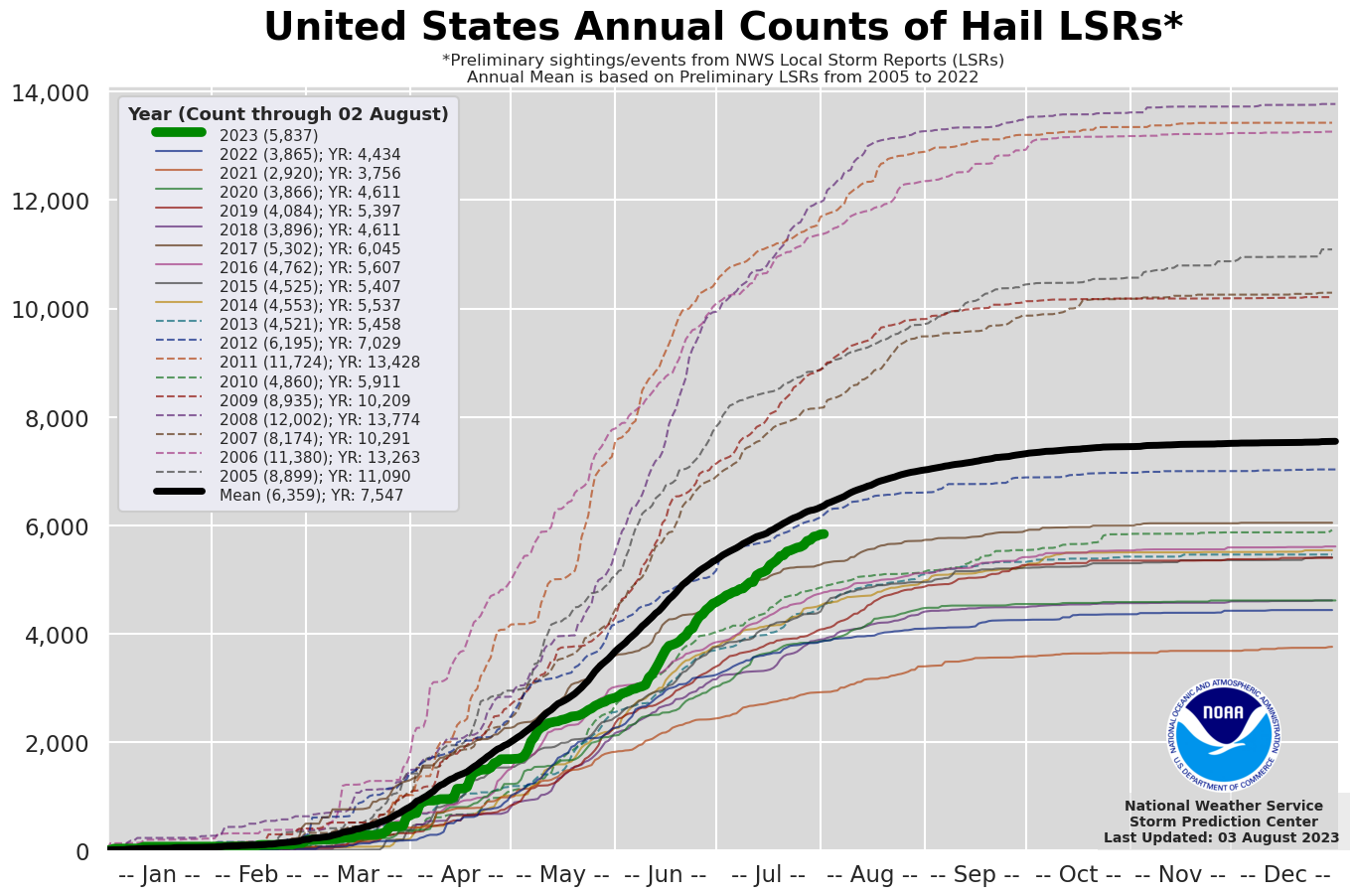Global Weather and Climate Disasters 1H 2023
The first half of 2023 was pretty typical, but the U.S. hurricane season looms
Last week Munich Re released their estimates for catastrophe losses for the 1st half of 2023. The most significant event was the Turkey and Syria earthquake which killed an estimated 58,000 people and caused $40 billion in damage.
Weather and climate catastrophes caused an estimated $70 billion in damage for the first six months of the year. In the graph below, I’ve estimated full-year 2023 catastrophe losses based on the historical relationship of first-half to full-year loss totals. About 40% of weather and climate-related losses occur in the first half of the year due to the U.S. hurricane season during the second half of the year. The blue line represents uncertainty.
Here are the data sources:
Munich Re (updated from Pielke 2019)
World Bank (GDP)
OMB (to convert 2015 USD to 2023 USD)
Pielke 2019 (methodology and background)
For comparison, according to Munich Re the first half of 2022 saw ~$56 billion in losses and the first half of 2021 ~$105 billion. Even with those big first half differences, 2021 and 2022 wound up at about the same overall total of ~$260 billion.
If there is a big U.S. hurricane, then $200 to $300 billion in 2023 losses might be possible. To reach loss as a proportion of GDP that was observed in 2005 (the year of hurricane Katrina) would require catastrophes totaling >$500 billion for 2023, or about 4 hurricanes with losses like Ian of 2022.
The overall trend is down despite rising aggregate costs. The UN recommends loss as a percentage of GDP as an appropriate measure of trends in the economic impacts of disasters.
A downward trend is good news because it indicates that our collective ability to prepare for weather and climate extremes is improving, regardless of trends in extreme weather events — for trends in extreme weather always look directly at weather and climate data, not economic data. This downward trend is apparent in rich and poor countries, with the most improvement observed in poorer regions.
That is good news indeed.
One last point. The largest source of weather and climate disaster losses in the first half of 2023 was hail damage in the United States. As you can see below, hail reports in the U.S. are running below average (2005-2022) and much less than the active period of 2008-2011.
The Tukey and Syria earthquake tells us that we still have massive exposure and vulnerability to extreme events around the world. With respect to weather and climate, the world continues to see the positive effects of decreasing vulnerability and across all extreme extreme weather and climate phenomena. We should continue to take actions that result in disaster risk reduction so that this trend long continues.
More on global disasters here - Don’t Believe the Hype.
Thanks for reading! I welcome comments and questions, and I’m happy to discuss in the comments. Please like and share, and if you are nit currently a subscriber, I invite you to join the THB community at whatever level works for you. For my paid subscribers, a special thanks as you make this work possible!







Thank you for all of your great work. Maybe I've missed something that you've done in the past, but I'd be very interested on your focused take re: sea level rise (or not) and ocean temperatures.
Thanks for transforming an oxymoron, practical environmentalism, into a rhyme, Roger.